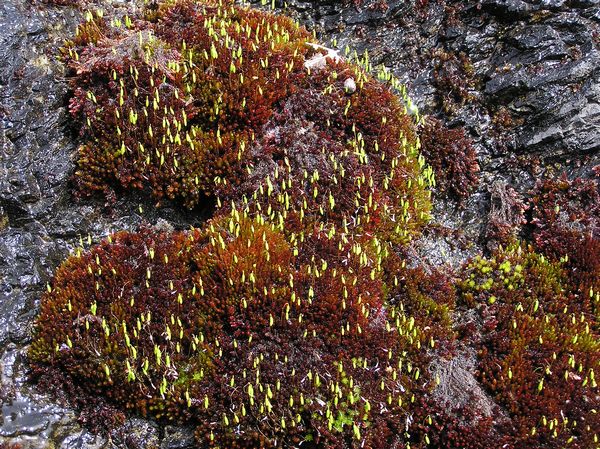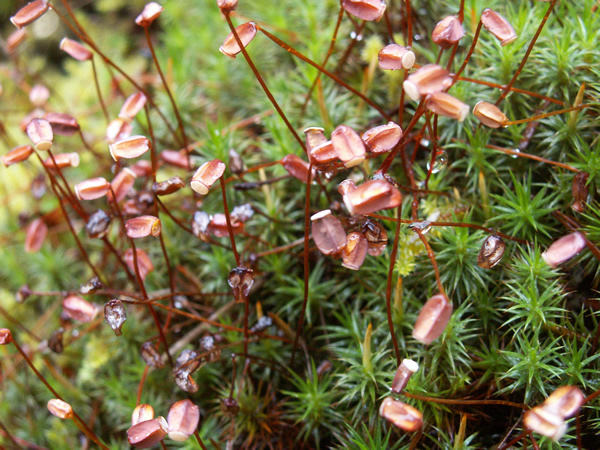 |
Mosses make up a rather common but under-appreciated and truly captivating group plants. This beautiful one is called Plume Moss, Dendroalsia abietina. |
| |
|
|
|
|
|
Shining Moss, Hookeria lucens |
|
Wavy-leafed Cotton Moss, Buckiella undulata |
| |
|
|
 |
__ |
Infrequent visitors to the woods may take mosses for granted, after all, they all look the same don't they?
Well, actually there is a vast difference among the many species of mosses that can occupy the same habitat.
Here are three very different looking plants all found in the same area. |
Juniper Haircap Moss, Polytrichum juniperinum |
|
|
| |
|
|
Different species often prefer different habitats and in the temperate rainforests of the Pacific Northwest there is an abundance of niches for mosses to grow.
This conk in a tree proves to be a perfect spot for a number of plants to establish themselves. |
|
 |
| | |
 |
Many mosses adapt to growing on trees and some, like Menzies' Anacolia Moss, Anacolia menziesii seem to completely cover massive trunks.
Notice the fine, thin forms of this moss' leaves. |
| |
 |
Plume Moss, Dendroalsia abietina, has fascinating, broader curly leaves. |
| |
 |
This is Cat-tail Moss, Isothecium myosuroides, growing profusely and hanging from trees just like some lichens do. |
| |
|
|
 |
__ |
 |
Like a creeping ivy, Nuttall's Homalothecium Moss, Homalothecium nuttallii (left) clings to the rough bark and spreads itself out.
Other mosses like Pinnatifid Homalothecium, Homalothecium pinnatifidum (right) are able to flourish on rocks. |
| I |
|
|
 |
Red Bryum, Bryum miniatum, is another moss which prefers rocks and can endure the constant flow of rain water that rushes down the mountain sides. The environment here suits this moss as it turns red and bursts into flower. |
| I |
 |
Roadside Rock Moss, Racomitrium canescens |
| |
 |
Apple Moss, Bartramia pomiformis |
| |
 |
| Palm Tree Moss, Leucolepis acanthoneuron, |
| |
 |
Juniper Haircap Moss, Polytrichum juniperinum, has some wonderful reddish capsules. |
|















